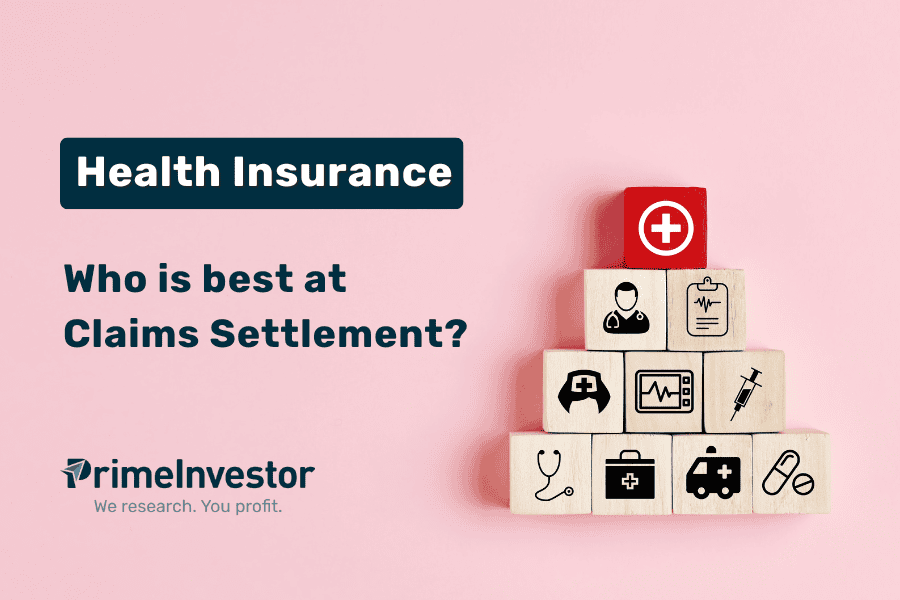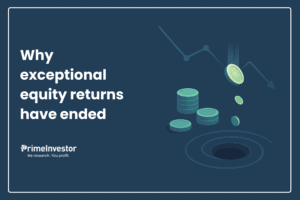With inputs from Bipin Ramachandran.
If you’re looking to choose a health insurance plan, the most important metric to look at is the insurer’s track record on paying claims. Indian health insurers tend to be slippery as eels when it comes to settling your bills.
The industry receives lakhs of customer complaints every year on rejected, repudiated and partly disallowed claims. We’ve discussed some reasons health insurers may reject claims earlier.
But how can you gauge a health insurer’s claims record? The data to make this assessment is not easy to find, as health insurers keep their claims numbers a closely guarded secret. IRDA, which used to compile this data in its annual reports until three years ago, has taken to blanking it out too.

At PrimeInvestor, we assign a high weight to an insurer’s claims settlement record in the Prime Health Insurance recommendations. Every year, we manually compile claims data from each individual insurer’s statutory disclosures.
We decided to publish this exclusive, hard-to-find data for your ready reference. We also explain how you should interpret it!
How they stack up
The table below ranks general and standalone health insurance companies based on their claims settlement ratios for FY24. FY23 numbers are also presented so you can evaluate consistency.
Here’s what the three ratios mean.
- Claims settlement by number: This is the number of claims that the insurer has paid in the financial year compared to the total number of claims it received and carried forward from the previous year.
- Claims settlement by value: This is the rupee value of claims paid by the insurer compared to the rupee value of the claims it received and carried forward from the previous year.
- Claims efficiency ratio: Of the claims that the insurer has paid, how many were paid within 3 months? This is captured in the claims settlement efficiency ratio.
How to read them
Health insurance buyers are often confused about what metric to look at when evaluating if a health insurer will keep its promise. So here are some tips on how you should read the above data.
Rejection vs repudiation:
When you file a claim with a health insurance company, it does not always admit it for further processing. Insurers ‘reject’ a fair number of claims soon after receiving them, for incomplete documentation, data errors, incorrect entries and so on. The official data on claims settlement provided by insurers does not capture the claims that are not admitted at all, due to deficiencies in paperwork. They only capture the claims that are declined after being admitted - this is called repudiation.
For instance, say an insurer received 1000 claims, rejected 200 for clerical errors and settled 600 of those claims within the year. Its claim settlement ratio will be 75% (600/800) and not 60% (600/1000). The claims settlement ratio is thus likely to be overstating the probability of your bill being paid by the insurer.
ICR is irrelevant:
Recently, the health insurance industry has been promoting the Incurred Claims Ratio or ICR, as the number that policyholders must check before signing up for a health plan. This is a diversionary tactic.
ICR measures the claims paid out by the insurer as a proportion of the premiums it has collected in a specific period. ICR tells you whether the insurer paid out more money in a particular period than the premiums it collected. During Covid for instance, most health insurers had ICRs above 100% because they were paying out more claims than premiums collected. Post-Covid, their ICRs have dropped below 90%.
The ICR is a rough gauge of an insurer’s profitability, not claims record. An investor may like to buy shares of an insurance company with a low ICR. But the ICR is of little value to the health policy buyer - who should be focussing on whether the insurer is in the habit of settling claims. In fact, an insurer with low ICR should be a red flag to policy buyers, because it shows the insurer loves to rake in premiums while economising on paying claims.
Claims by value:
Many folks choose their health insurance plan based on the claims settlement ratio (CSR) by number. They assume that if an insurer has a 90% CSR by number, they have a 9 in 10 chance of getting their bills reimbursed. But this is very misleading because insurers very often settle only part of the claim you file with them. It is routine practise for insurers to disallow some items of expenses from your hospital bill – the cost of consumables, room and other associated charges beyond policy sub-limits etc.
This is where CSR by value comes in. The data we shared above shows you that many insurers manage a CSR by number ratio above 90%, but only a few manage a CSR by value ratio that is above 90%. In FY24, 14 of 27 insurers had a CSR ratio of over 90% by number, but only 7 of 27 insurers had a CSR of over 90% by value, showing that they settled a large proportion of the bills admitted by them.
This is why CSR by value is the key metric to look at while choosing a health insurer. It helps you weed out insurers who settle your claim on paper but leave a large part of your hospital bills uncovered.
PSU versus private insurers
The conventional wisdom on health insurance is that PSU insurers are not a good choice because they impose sub-limits on your room and treatment charges, and have co-payment clauses that result in only partial settlement of your bills. Private health insurers on the other hand, have no sub-limits on rooms, diseases or co-payment clauses.
But the data on CSR shows that PSU insurers score very high on the CSR by value ratio, with all of them settling over 95% of claims by value. The gaps between their CSR ratios by value and number are also not very large.
This indicates that PSU insurers offer greater certainty of claims payment, by settling most of the claims that they admit after enforcing sub-limits, co-payment clauses etc. Private insurers, on the other hand, seem to be compensating for their no sub-limit and co-payment clauses through poorer CSRs by value.
This goes to show that if you’re buying a health insurance policy, you can’t go wholly by product features such as no co-payment, no sub-limits etc. Product features need to be evaluated along with the insurer’s willingness to fully pay claims.
This is why we give PSU insurers equal consideration in our product rankings and consideration. We have a mix of products from both private and PSU insurers in our health insurance recommendations.
Note: The claim ratios are calculated from public disclosures of individual insurers. In case there is an error in calculation using claim settlement values, claim repudiation values are used to indirectly calculate claim settlement ratios.







40 thoughts on “Health insurance: Who is best at claims settlement?”
Aarati Madam,
Nice article. I like that there are always some Action-able pointers in your articles 🙂
Was not aware of CSR(V) before your article
Thank you
Hello Aarati mam,
Nice article.
Kindly clarify one doubt.
I am in process of obtaining separate health insurance policy, apart from employer coverage. My financial advisor recommends, HDFC ergo optima secure (mainly due to multiplier benefits) not to consider optima Restore at current scenario. As coincidence, this article recommends restore policy, so kindly guide to clarify, which one to consider.
Optima Restore is better as your sum assured will get refilled if you use the policy. However we plan to write an important article sharing a health insurance hack next week. Please make your decision after that.
Thanks for reply
Thank you for the informative report.
I have an individual 15L Care Supreme policy (restore one) (just ported out of Niva reAssure). Is it advisable to take a super top-up (I am in my mid 30s)? If so, should one consider a super top-up from the same insurer or different?
Why had HDFC Ergo been considered in super top-up? Asking because they offer a super top maxing at 20L. That seems a bit out of place seeing today’s medical inflation, won’t you say so? A survey or some data on what is the average SI of PI customers might have given some pointer to be honest (because that is whom the article is for, right?).
Also, I see Star and Bajaj Allianz in base health policies. I have had experience with Star (for relatives) and was nightmarish and I tried asking friends and colleagues and they said Star should summarily be avoided. I do not question your report because my assumption is you would have gone by just number/facts. But given the limited numbers and what they project is it advisable to take these numbers at face value, just like we should not consider ICR at all? Have not heard or read good things about Bajaj either.
Again, appreciate the report. This is the first time I looked at it from the CSR(V) angle ever! So thank you for that 🙏
Thanks for raising this. Yes we are aware of the limitations of going by numbers when it comes to health insurance and have been trying to arrive at a solution. HDFC ergo and National figure in our recos due to their relatively better claims record. It does make sense to take a super topup. We are working on a research piece on this, so kindly wait for it.
very informative data. While ICICI Lombard seems to have recently launched an attractive plan under the name elevate – the data on claim settlement by value shows a pretty poor picture on them.
What could be the reason for inconsistency across years for some others – eg. Tata AIG the variance across FY24 and FY23 is around 10% across both CS value and number. In genernal companies dont overnight become more lenient and behave in a consistent manner across years. Is there a way to assess this data better?
Given the limited info available it’s hard to go beyond the CSR ratios.
We track the CSR numbers over time to give our recos though this article only provides numbers for the last two years.
Very informative article.
I am planning to buy a new insurance policy in a week and stop paying premium for existing insurance policy which is due in a week.
I want to know if there will be change in recommendations based on CSR by value. I was thinking of buying ICICI health insurance recommended by primeinvestor but wanted to know if there will be change in recommendations based on this data.
Our insurer rankings do factor in csr by value. Kindly choose your plan based on Prime recos
From personal experience, Star Health refused to pay out a valid claim repeatedly asking for non-existent nonsensical documents. Changed to National Insurance and they were much better on another claim. They reimbursed but amount received was only about 50%.
Health insurance is largely a scam. Putting you through tedious paperwork and running around when you’re at your most vulnerable. And never fully serving its purpose when you need it most. You can pay premiums for a lifetime and then they never come through when you finally need it because of some ridiculous clause they inserted halfway 20 years after you signed up or they exhaust you with claims procedures and paperwork when you’re ill and hospitalized.
Now we have a “Health Insurance Fund” that keeps growing on top of our insurance plan.
That’s unfortunately what many readers share. Do share how you have constructed your health fund.
Aarti please extend your suggestions for an health fund construction being self sufficient , as It’s irony that insurance is given / taken for an healthy adult and regretted for aged members and if any claim not even application is entertained , premium ceiling comes into play etc
Will try and write about this.
Hi Aarati,
I hear … Many reputed and private hospitals do not entertain ‘cashless’ admissions against PSU insurance as the insurer takes irrationally long time to settle payments to the hospitals.
How true is this..? My personal experience with New India Assurance has been very pleasant wrt claim reimbursement post payment at the hospital.
Regards… Jatin
I don’t think this is true because PSU insurers have a large share of corporate business and so private hospitals need to tie up with them. I too have had a seamless exp with United India.
I really do not think so. I have Oriental Insurance for my family since last 26 years and the experience has been good in hopitals like Apollo & Fortis. Cash less settlement is very smooth. I haven’t had any issues with them. My wife has developed hypertension & diabetes, I informed them on email with the test reports & the medications she is taking during the renewal of the policy. They accepted it without increasing the premium for family floater & top up. Even for procedures which do not require hospitialisation they have paid in full.
Thanks Aarti, Very nice article and an eye opener. I used to think that CSR by number is better, now got a new perspective. I had PSU health insurance and was thinking of porting to private health insurer. Now staying put with my current health insurance which has a very high CSR by value and number.
Yes may be better to put up with sub limits etc for better claims experience! No point porting
quite an eye opener… psu insurers fare better !
Yes that’s the surprise.
I’m not writing this comment to educate Ms. Aarati Krishnan or other informed people, but to inform all the other people who are not fully aware of PSU insurers.
I’ve read all the comments on PSU insurers. They are not all that great. The 1% of SI room rent capping clause is the biggest spoiler/let-down with PSU insurers. If your SI is 3 lakh for instance, you can take a room only for Rs. 3,000 per day (1% of SI). For instance, If you take a room for Rs.4,500 (50% more room rent than the allowed 1% of SI) then 50% of the ENTIRE CLAIM will be forfeited. In what way is this fair? If a person gets insured for just 1 lakh, they might not get any claim, because in most hospitals even general ward charges more than Rs. 1000 a day.
The only way out of this is to have a higher sum assured by paying a higher premium at the time of taking the policy itself. Because, when I approached the PSU insurer they are very reluctant to increase the SI even by 50,000 or 1 lakh, especially even if you made a minor claim in previous year/s.
And if they DO agree to increase the SI, there is a two year waiting period for the increased SI to kick-in. So it might take even 10 years for one to increase their SI from say 4 lakh to 10 lakh, that is if they DO agree to increase it. The quantum of allowed increase in SI is decided based on your age and previous claims history. PSU insurers have a highly prejudiced, judgmental and unfair system that doesn’t work in times of emergencies for many people. And they don’t go by the rules and IRDA norms. Its all based on their cash position and profit that particular year. We are not asking anything that is illegal or what the rules and regulations don’t allow!
Also, they keep changing clauses every year. They paid only 50% for my claim although there was no sub-limit for the particular surgery, even though I was within the 1% room-rent capping limit. I escalated as a grievance to higher authorities but they would not give any reason why only 50% of claim was paid. Also, they have TPAs with poor customer care, and some cant even understand the language we speak – even English. Customer care of TPAs is very poor. The PSU insurer’s TPAs work only to favour the insurers and not the common man.
Thank you for sharing your experience. Yes PSU insurers have room sub limits and other red tape that reduce your SI and reimbursement. But people have equally bad experiences to recount about private insurers. They market their products saying no sub limits and promote large SI upto Rs 1 crore, but then fail to pay even fraction of the SI as claim. TPAs are bad across insurers. It’s a tough choice but what to do, health insurance is an essential product!
Mam, thank you for being empathetic about my experience with health insurance. However, Primeinvestor has been a huge help in my life in managing my finances. I avoided a lot of losses by reading primeinvestor articles. I’ve been subscribing for last few years. Best wishes to you and our entire PI community.
Glad to hear that sir!
Hi Aarati.
How does that factor in in CSR(Value)?
Let’s say actual room rent was 8000 per night (which is not unheard of today but just an example) and due to SI’s x% limit, again for example, only 4000 was paid and hence every other expenses (or most) at 50% then what is that considered in CSR (Value)? 100% paid or only 50% paid? Because as you can see — from the insurer’s angle they paid 100% “eligible” amount but for insured’s angle the payment was only 50%. Not commenting and saying whether private is bad or PSU, just to understand how CSR (value) might have actually been calculated.
Excellent article .. one need to check with their insurer’s where they stand on claim ratio by value , do they provide value in return to lofty premiums
👍
Comments are closed.